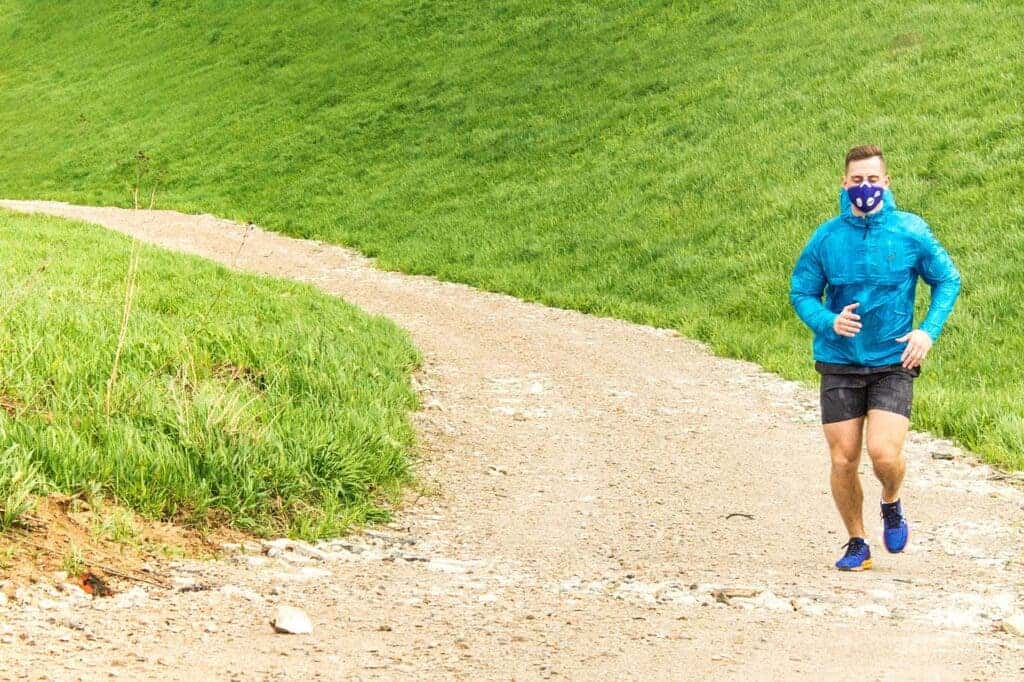
Depending on where you live, you may be allowed to exercise again outdoors or even indoors inside gyms. However, if you’re around a lot of people who are sweating and breathing heavily, you’re also putting yourself at significant risk of catching the coronavirus. A face mask can help mitigate this risk, but some precautions are required.
What happens when you exercise with a face mask
Obviously, wearing a mask while performing strenuous exercise is uncomfortable. The real issue is that it can also be quite dangerous for people with underlying cardiovascular or respiratory conditions due to restrictions in airflow.
How much air is restricted from reaching the lungs depends on the thickness of the mask’s material, but virtually all masks will cause some reduction in the available oxygen, which the body can utilize to convert glucose to energy.
This entails that wearing masks significantly affects the quality of the workout — but the upside is that you’re safer from possible coronavirus infections via aerosols. This risk is particularly concerning in gyms, where much more aerosols are released and stay airborne for longer due to the indoor space.
If you’re willing to trade workout efficiency for medical safety, most people should be alright. However, those with respiratory or cardiovascular conditions are better off exercising indoors, at home. These include asthma, chronic obstructive pulmonary disorder (COPD), bronchitis, cystic fibrosis, pulmonary fibrosis, and any other conditions that affect the heart or lungs.
Also, those who haven’t exercised in a while — which might mean most people who’ve been under lockdown until recently — should be very mindful of how their body reacts. Keeping workouts to low-to-moderate intensity is advised while wearing a mask, Scott McAfee, physical therapist and orthopedic specialist at MovementX, told CNET.
As a rule of thumb, look for any signs of dizziness, lightheadedness, or fainting. These are clear signs that you should tone down the intensity of the exercise or stop altogether for a rest.
Breathe in, but also breathe out
The issue with face masks is that they not only restrict airflow into the lungs, but also the outflow of carbon monoxide.
When we exercise, muscles produce lactic acid that is converted into carbon dioxide and exhaled. Face masks can trap some of that carbon dioxide, which you later re-breathe, possibly reducing cognitive function and increasing breathing rate.
According to Lindsay Bottoms, the deputy head of the Centre for Research in Psychology and Sports Science at the University of Hertfordshire in the UK, less oxygen in the recycled air is equivalent to exercising at higher altitudes. For some individuals, this can be highly dangerous.
She recounts the story of two teenage Chinese boys who died within a week of each other after they performed compulsory physical education examinations while wearing face masks. Although there is no direct evidence to suggest that restricted airflow caused by the masks is what killed the two boys, it is a possibility.
In order to understand how face masks alter oxygen intake and carbon dioxide release, Bottoms wore a full fencing kit while running on a treadmill at 10 kph for three minutes. She ran in two sessions, one with a cloth face mask beneath the fencing mask and the other just with the fencing mask on. The concentration of the gases was measured using a portable gas analyzer.
While running only with the fencing mask, Bottoms recorded an oxygen concentration of 19.5%, which is equivalent to the one found at 600 meters above sea level.
With the cloth mask on, the oxygen levels dropped to 17%, which is equivalent to exercising at 1,500 meters.
“Any further decreases in oxygen concentration — by exercising longer or harder — would have a large effect on the physiological responses to exercise, causing altitude-sickness symptoms such as dizziness or headache,” she wrote in a recent article for The Conversation.
Concerning CO2 intake, Bottoms found that she breathed air with 1% carbon dioxide with just the fencing mask on. The concentration of the gas jumped to 3% with the cloth mask on. Prolonged exposure to a high concentration of CO2 such as this can be dangerous for some people, which is why the study has called for urgent research that might determine how safe it is to exercise with various face masks on.



